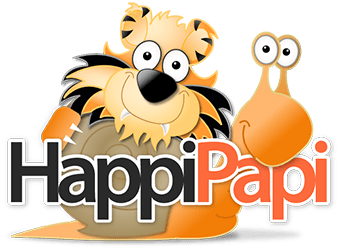
A Strategy Misunderstood
After successfully implementing our “Many a Mickle…” strategy by releasing our first game “Happi Reads” in six different languages and markets, we were getting ready for the last two of our committed languages, German and Spanish.
Judge by our surprise when our German app “Happi liest” was rejected. It had been in “Waiting for Review” for about a week (which is what it normally takes for Apple to approve an app) and we were just waiting for the formal “Processing for the App Store” message when we instead saw a big red dot next to our app and the word “Rejected”!
Confusion
The confusion did not lessen when we read the explanation for why the app had been rejected. In short, we had been rejected for trying to spam the App Store with too many versions of the same game. We immediately realized from Apple’s “explanation” that they had not at all understood our strategy. But Apple is a big company and Happi Papi is tiny (at least by comparison :-) so what should we do?
From the rejection letter it was clear that Apple thought we released many, slightly different, versions of the same game to “take up more space” on the App Store and thus increase our brand’s visibility. Instead of doing it this way, Apple “suggested” that we use their “in-app purchase” mechanism to provide different languages in the same app.
No, Not Spamming
First of all, we were not spamming the App Store because we made sure that every different language version of “Happi Reads” was just available in that country’s App Store. For example, if you have an iTunes account in Norway, you would only see “Happi leser” and not “Happi Reads”, Happi legge” or any other version of the game.
Secondly we do not want do include different languages in the same app. We might do this in the future and market the app as a “teach your kid a new language” game instead of “teach your kid to read” game. But at this point we only want one language per app. We had also taken an internal pledge never to use “in-app purchases” in our apps for kids. We believe it to be wrong for kids to navigate through links, ads and purchase buttons they don’t understand just to play a game they like.
Localization In App Store Is Limited
Apple also suggested that we could use the “localization option” in iTunes Connect (dev. admin panel) to provide different versions of the same game in a single app. This is actually a great solution except for the fact that Apple only provide this option for about 10 languages. Thus, if we were to use this approach we would have to, for example, write the App Store game descriptions in English for the languages not included by Apple. If you were a parent, would you by a “learn to read” app for your native language if the App Store description of that app was in English? No, me neither!
The Appeal
So what happened in the end? Well, after deliberating for a long time we decided to appeal to Apple’s good senses and appeal the rejection based on Apple misunderstanding our release strategy. We crafted a detailed letter explaining our view of the matter. We did not really think it would make any difference so we also went ahead with creating a universal version with all languages supported for localization included. At this point that only left out Denmark and Norway from our list of countries. We did not have a solution for these two markets at that time.
Luckily, we never had to come up with one either. After about 10 days, Apple approved our appeal and released our rejected games. From now on we always include a “reviewer’s note” explaining our release strategy when we submit an app for review.








